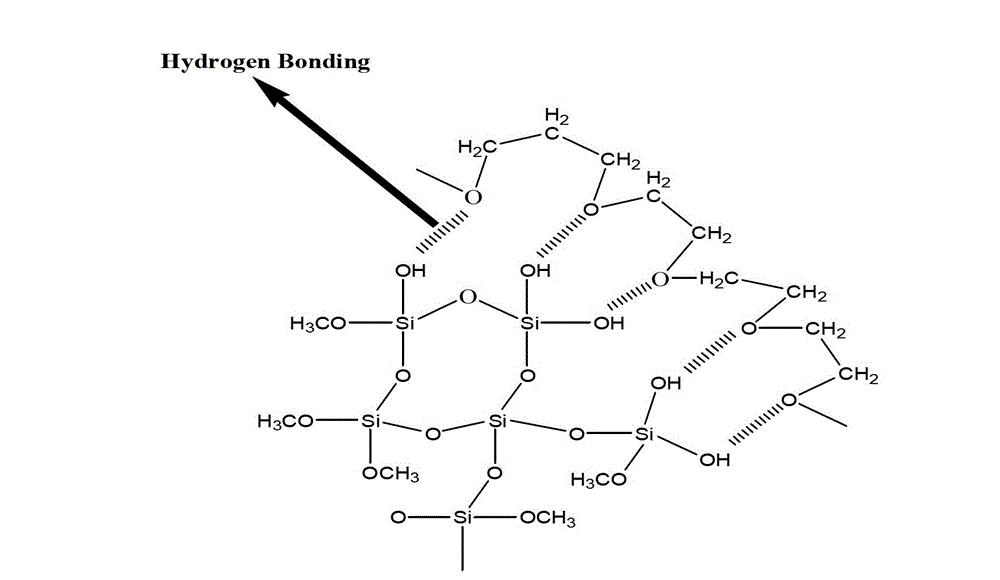Targeted sustained release medicine carrying nanoparticle and preparation method thereof
A technology of drug-loaded nano and nano-microspheres, which is applied in pharmaceutical formulations, anti-tumor drugs, drug combinations, etc., can solve problems such as insufficient research, and achieve the effects of prolonging action time, smooth shape and uniform size
- Summary
- Abstract
- Description
- Claims
- Application Information
AI Technical Summary
Problems solved by technology
Method used
Image
Examples
Embodiment 1
[0050] Adopt emulsification-solvent volatilization method to prepare the method for nano microsphere:
[0051] A FA-PEG-PLGA / PEG-PLGA-CAP+CAP / TMOS nanosphere, which contains chemically bonded and physically encapsulated capecitabine molecules, and the degradable carrier I is FA-PEG-PLGA connected with a targeting agent The degradable carrier II is a polymer compound of PEG-PLGA-CAP connected with the anti-tumor drug capecitabine, the carrier I and the carrier II are mixed at a ratio of 1:3, and the oil phase uses dichloromethane . The surfactant concentrations of the two emulsifications were 4% and 1%, respectively. The twice emulsified surfactant solution is 2 times and 30 times the volume of dichloromethane respectively, the amount of the CAP substance added in the preparation is 13 times the amount of the substance bonded to the drug, and the amount of the TMOS substance added is the carrier 100 times the amount of the total substance. Its specific preparation scheme is:...
Embodiment 2
[0064] The difference between this embodiment and embodiment 1 is:
[0065] The amount of the organic solvent in step 1) in Example 1 was 15 mL. The volume of the PVA aqueous solution in step 4) is 30mL, and the volume of the PVA aqueous solution in step 5) is 450mL.
[0066] The obtained nano-microspheres were tested and characterized by a laser particle size analyzer and a scanning electron microscope, and it was found that the particle size of the nano-microspheres in this example was smaller than that in Example 1, with an average of 190 nm; the surface roughness increased. This is because in this embodiment, the volume of the organic solvent increases and the viscosity of the oil phase decreases, so the carrier and the drug are more easily dispersed into fine droplet sizes. In addition, the increase of the oil phase also shortens the volatilization distance of the oil phase, accelerates the solidification speed of the nano-microspheres, and increases the surface roughnes...
Embodiment 3
[0068] The difference between this embodiment and embodiment 1 is:
[0069] The volume of the PVA aqueous solution in step 5) in Example 1 was adjusted to 500 mL, that is, the volume of the second emulsified surfactant solution was 50 times the volume of the organic solvent. The obtained nano-microspheres were tested and characterized by a laser particle size analyzer and a scanning electron microscope, and it was found that the particle size of the nano-microspheres in this example was smaller than that in Example 1, and the surface roughness was increased. This is because in this embodiment, the volume of the outer water phase increases, and the volatilization speed of the oil phase solvent accelerates, so the solidification time of the nano-microspheres is shortened, and the higher flow pressure will form a porous structure on the surface and inside of the microspheres, resulting in nano-microspheres. The number of voids on the surface of the ball increases, and the surface...
PUM
| Property | Measurement | Unit |
|---|---|---|
| Particle size | aaaaa | aaaaa |
Abstract
Description
Claims
Application Information
 Login to View More
Login to View More - R&D Engineer
- R&D Manager
- IP Professional
- Industry Leading Data Capabilities
- Powerful AI technology
- Patent DNA Extraction
Browse by: Latest US Patents, China's latest patents, Technical Efficacy Thesaurus, Application Domain, Technology Topic, Popular Technical Reports.
© 2024 PatSnap. All rights reserved.Legal|Privacy policy|Modern Slavery Act Transparency Statement|Sitemap|About US| Contact US: help@patsnap.com










